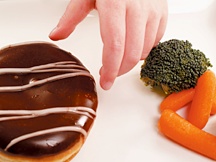 |
||
 |
||
|
|
|
Active Hydrogen
Adrenal Extracts
Alanine
Alpha-Linolenic Acid
Alpha-Lipoic Acid
AMP
Amylase Inhibitors
Arginine
Bee Pollen
Beta Carotene
Beta-glucan
Betaine
Beta-Sitosterol
Biotin
Borage Oil
Boron
Bovine Cartilage
Bovine Colostrum
Brewer's Yeast
Bromelain
Calcium
Capsaicin
Carnitine
Carnosine
Chitosan
Chloride
Chlorophyll
Chondroitin
Chromium
CLA
Cobalt
Coenzyme Q10
Copper
Creatine
Cysteine
DHA
DHEA
DMAE
EGCG
Evening Primrose Oil
5-HTP
Fiber (Insoluble)
Fiber (Soluble)
Fish Oil
Flavonoids
Fluoride
Folate
Fumaric Acid
GABA
Gamma-Linolenic Acid
Glucomannan
Glucosamine
Glutamic Acid
Glutamine
Glutathione
Glycine
Grape Seed Extract
Histidine
HMB
Hydroxycitric Acid
Indole
Inosine
Inositol
Iodine
Ipriflavone
Iron
Isoleucine
Lactase
Lecithin
Leucine
Lipase
Lutein
Lycopene
Lysine
Magnesium
Malic Acid
Manganese
Mannose
Melatonin
Methionine
Methoxyisoflavone
Molybdenum
MSM
N-Acetyl Cysteine
NADH
Naringin
Niacin
Octacosanol
Oligosaccharides
Olive Leaf Extract
Ornithine
Oryzanol
PABA
Pancreatic Enzymes
Pantothenic Acid
Phenylalanine
Phosphatidylserine
Phosphorus
Phytic Acid
Policosanol
Potassium
Pregnenolone
Probiotics
Propolis
Psyllium
Pyridoxine
Pyruvate
Quercetin
Resveratrol
Retinol
Riboflavin
Ribose
Royal Jelly
SAMe
Selenium
Shark Cartilage
Silicon
Sodium
Spirulina
Spleen Extracts
St. John's Wort
Strontium
Sulforaphane
Sulfur
Taurine
Thiamine
Tocopherol
Tea Tree Oil
Tyrosine
Usnic Acid
Valine
Vanadium
Vinpocetine
Vitamin A
Vitamin B1
Vitamin B2
Vitamin B3
Vitamin B5
Vitamin B6
Vitamin B9
Vitamin B12
Vitamin C
Vitamin D
Vitamin H
Vitamin K
Whey Protein
Xylitol
Zinc
Abalone Shell (shi jue ming)
Abutilon Seed (dong kui zi) Acanthopanax Bark (wu jia pi) Achyranthes (niu xi) Aconite (fu zi) Acorus (shi chang pu) Adenophora Root (nan sha shen) Agkistrodon (bai hua she) Agrimony (xian he cao) Ailanthus Bark (chun pi) Akebia Fruit (ba yue zha) Albizzia Bark (he huan pi) Albizzia Flower (he huan hua) Alfalfa (medicago sativa) Alisma (ze xie) Aloe (lu hui) Alum (bai fan) Amber (hu po) Ampelopsis (bai lian) Andrographis (chuan xin lian) Anemarrhena (zhi mu) Antelope's Horn (ling yang jiao) Apricot Seed (xing ren) Areca Peel (da fu pi) Areca Seed (bing lang) Arisaema (tian nan xing) Ark Shell (wa leng zi) Arnebia (zi cao or ying zi cao) Arnica (arnica montana) Artichoke Leaves (Cynara scolymus) Ash bark (qin pi) Ashwagandha (withania somniferum) Aster (zi wan) Astragalus (huang qi) Aurantium (zhi ke [qiao]) Bamboo Juice (zhu li) Bamboo Shavings (zhu ru) Belamcanda Rhizome (she gan) Benincasa Peel (dong gua pi) Benincasa Seed (dong gua xi/ren) Benzoin (an xi xiang) Bilberry (yue ju) Biota Leaf (ce bai ye) Biota Seed (bai zi ren) Bitter Melon (ku gua) Bitter Orange Peel (ju hong) Black Cohosh (sheng ma) Black Plum (wu mei) Black Sesame Seed (hei zhi ma) Bletilla (bai ji) Boneset (ze lan) Borax (peng sha) Borneol (bing pian) Bottle Brush (mu zei) Buddleia (mi meng hua) Buffalo Horn (shui niu jiao) Bulrush (pu huang) Bupleurum (chai hu) Burdock (niu bang zi) Camphor (zhang nao) Capillaris (yin chen hao) Cardamon Seed (sha ren) Carpesium (he shi) Cassia Seed (jue ming zi) Catechu (er cha) Cat's Claw (uncaria tomentosa) Cephalanoplos (xiao ji) Celosia Seed (qing xiang zi) Centipede (wu gong) Chaenomeles Fruit(mu gua) Chalcanthite (dan fan) Chebula Fruit (he zi) Chinese Gall (wu bei zi) Chinese Raspberry (fu pen zi) Chrysanthemum (ju hua) Cibotium (gou ji) Cinnabar (zhu sha) Cinnamon (rou gui or gui zhi) Cistanche (rou cong rong) Citron (xiang yuan) Citrus Peel (chen pi) Clam Shell (hai ge ke/qiao) Clematis (wei ling xian) Cloves (ding xiang) Cnidium Seed (she chuang zi) Codonopsis (dang shen) Coix Seed (yi yi ren) Coptis (huang lian) Cordyceps (dong chong) Coriander (hu sui) Corn Silk (yu mi xu) Cornus (shan zhu yu) Corydalis (yan hu suo) Costus (mu xiang) Cranberry (vaccinium macrocarpon) Cremastra (shan ci gu) Croton Seed (ba dou) Curculigo (xian mao) Cuscuta (tu si zi) Cuttlefish Bone (hai piao xiao) Cymbopogon (xiang mao) Cynanchum (bai qian) Cynomorium (suo yang) Cyperus (xiang fu) Dalbergia (jiang xiang) Damiana (turnera diffusa) Dandelion (pu gong ying) Deer Antler (lu rong) Dendrobium (shi hu) Devil's Claw (harpagophytum procumbens) Dianthus (qu mai) Dichroa Root (chang shan) Dittany Bark (bai xian pi) Dong Quai (tang kuei) Dragon Bone (long gu) Dragon's Blood (xue jie) Drynaria (gu sui bu) Dryopteris (guan zhong) Earthworm (di long) Eclipta (han lian cao) Elder (sambucus nigra or sambucus canadensis) Elsholtzia (xiang ru) Ephedra (ma huang) Epimedium (yin yang huo) Erythrina Bark (hai tong pi) Eucalyptus (eucalyptus globulus) Eucommia Bark (du zhong) Eupatorium (pei lan) Euphorbia Root (gan sui or kan sui) Euryale Seed (qian shi) Evodia (wu zhu yu) Fennel (xiao hui xiang) Fenugreek (hu lu ba) Fermented Soybeans (dan dou chi) Flaxseed (ya ma zi) Fo Ti (he shou wu) Forsythia (lian qiao) Frankincense (ru xiang) Fritillaria (chuan bei mu) Gadfly (meng chong) Galanga (gao liang jiang) Galena (mi tuo seng) Gambir (gou teng) Gardenia (zhi zi) Garlic (da suan) Gastrodia (tian ma) Gecko (ge jie) Gelatin (e jiao) Genkwa (yuan hua) Germinated Barley (mai ya) Ginger (gan [sheng] jiang) Ginkgo Biloba (yin xing yi) Ginseng, American (xi yang shen) Ginseng, Asian (dong yang shen) Ginseng, Siberian (wu jia shen) Glehnia (sha shen) Glorybower (chou wu tong) Goldenseal (bai mao liang) Gotu Kola (luei gong gen) Green Tea (lu cha) Gymnema (gymnema sylvestre) Gynostemma (jiao gu lan) Gypsum (shi gao) Halloysite (chi shi zhi) Hawthorn (shan zha) Hemp Seed (huo ma ren) Homalomena (qian nian jian) Honey (feng mi) Honeysuckle Flower (jin yin hua) Honeysuckle Stem (ren dong teng) Houttuynia (yu xing cao) Huperzia (qian ceng ta) Hyacinth Bean (bai bian dou) Hyssop (huo xiang) Ilex (mao dong qing) Imperata (bai mao gen) Indigo (qing dai) Inula (xuan fu hua) Isatis Leaf (da qing ye) Isatis Root (ban lan gen) Java Brucea (ya dan zi) Jujube (da zao) Juncus (deng xin cao) Kadsura Stem (hai feng teng) Katsumadai Seed (cao dou kou) Kelp (kun bu) Knotweed (bian xu) Knoxia root (hong da ji) Kochia (di fu zi) Lapis (meng shi) Leech (shui zhi) Leechee Nut (li zhi he) Leonorus (yi mu cao) Lepidium Seed (ting li zi) Licorice (gan cao) Ligusticum (chuan xiong) Ligustrum (nč zhen zi) Lily Bulb (bai he) Limonite (yu liang shi) Lindera (wu yao) Litsea (bi cheng qie) Lobelia (ban bian lian) Longan (long yan hua [rou]) Lophatherum (dan zhu ye) Loquat Leaf (pi pa ye) Lotus Leaf (he ye) Lotus Node (ou jie) Lotus Seed (lian zi) Lotus Stamen (lian xu) Luffa (si gua luo) Lycium Bark (di gu pi) Lycium Fruit (gou qi zi) Lygodium (hai jin sha) Lysimachia (jin qian cao) Magnetite (ci shi) Magnolia Bark (hou po) Magnolia Flower (xin yi hua) Maitake (grifola frondosa) Marigold (c. officinalis) Massa Fermentata (shen qu) Milk Thistle (silybum marianum) Millettia (ji xue teng) Mint (bo he) Mirabilite (mang xiao) Morinda Root (ba ji tian) Mugwort Leaf (ai ye) Mulberry Bark (sang bai pi) Mulberry Leaf (sang ye) Mulberry Twig (sang zhi) Mullein (jia yan ye) Musk (she xiang) Myrrh (mo yao) Notoginseng (san qi) Notopterygium (qiang huo) Nutmeg (rou dou kou) Oldenlandia (bai hua she she cao) Omphalia (lei wan) Onion (yang cong) Ophicalcite (hua rui shi) Ophiopogon (mai dong) Oroxylum Seed (mu hu die) Oryza (gu ya) Oyster Shell (mu li) Passion Flower (passiflora incarnata) Patrinia (bai jiang cao) Pau D'Arco (tabebuia avellanedae) Peach Seed (tao ren) Pearl (zhen zhu [mu]) Perilla Leaf (su ye) Perilla Seed (su zi) Perilla Stem (su geng) Persimmon (shi di) Pharbitis Seed (qian niu zi) Phaseolus (chi xiao dou) Phellodendron (huang bai) Phragmites (lu gen) Picrorhiza (hu huang lian) Pinellia (ban xia) Pine Knots (song jie) Pipe Fish (hai long) Plantain Seed (che qian zi) Platycodon (jie geng) Polygala (yuan zhi) Polygonatum (huang jing) Polyporus (zhu ling) Poppy Capsule (ying su qiao) Poria (fu ling) Prickly Ash Peel (hua jiao) Prinsepia Seed (rui ren/zi) Prunella (xia ku cao) Prunus Seed (yu li ren) Pseudostellaria (tai zi shen) Psoralea (bu gu zhi) Pueraria (ge gen) Pulsatilla (bai tou weng) Pumice (fu hai shi) Pumpkin Seed (nan gua zi) Purslane (ma chi xian) Pyrite (zi ran tong) Pyrrosia Leaf (shi wei) Quisqualis (shi jun zi) Radish (lai fu zi) Realgar (xiong huang) Red Atractylodes (cang zhu) Red Clover (trifolium pratense) Red Ochre (dai zhe shi) Red Peony (chi shao) Red Sage Root (dan shen) Rehmannia (shu di huang) Reishi (ling zhi) Rhubarb (da huang) Rice Paper Pith (tong cao) Rose (mei gui hua) Rosemary (mi die xiang) Safflower (hong hua) Saffron (fan hong hua) Sandalwood (tan xiang) Sanguisorba Root (di yu) Sappan Wood (su mu) Sargent Gloryvine (hong teng) Saw Palmetto (ju zong lu) Schefflera (qi ye lian) Schisandra (wu wei zi) Schizonepeta (jing jie) Scirpus (san leng) Scopolia (S. carniolica Jacq.) Scorpion (quan xie) Scrophularia (xuan shen) Scutellaria (huang qin) Sea Cucumber (hai shen) Sea Horse (hai ma) Seaweed (hai zao) Selaginella (shi shang bai) Senna (fan xie ye) Shiitake (hua gu) Siegesbeckia (xi xian cao) Siler Root (fang feng) Slippery Elm (ulmus fulva) Smilax (tu fu ling) Smithsonite (lu gan shi) Sophora Flower (huai hua mi) Sophora Root (ku shen) Spirodela (fu ping) Stellaria (yin chai hu) Stemona (bai bu) Stephania (fang ji [han]) Sweet Annie (qing hao) Teasel Root (xu duan) Tiger Bone (hu gu) Torreya Seed (fei zi) Tortoise Plastron (gui ban) Tremella (bai mu er) Trichosanthes Fruit (gua lou) Trichosanthes Root (tian hua fen) Trichosanthes Seed (gua lou ren) Tsaoko Fruit (cao guo) Turmeric (jiang huang) Turtle Shell (bie jia) Tussilago (kuan dong hua) Urtica (xun ma) Uva ursi (arctostaphylos uva-ursi) Vaccaria Seed (wang bu lui xing) Valerian (jie cao) Veratrum (li lu) Viola (zi hua di ding) Vitex (man jing zi) Walnut (hu tao ren) Watermelon (xi gua) White Atractylodes (bai zhu) White Mustard Seed (bai jie ze) White Peony (bai shao) Wild Asparagus (tian men dong) Windmill Palm (zong lu pi/tan) Xanthium (cang er zi) Zedoary (e zhu) |
In Need of a Helping Hand
By Meghan Vivo, Associate Editor The ability to monitor and evaluate consumer preferences and trends is big business. Multinational companies, health care professionals and the public utilize this information to design marketing campaigns, create new products and services, and improve consumer dietary standards. The first Food & Health Survey: Consumer Attitudes toward Food, Nutrition, and Health was conducted by the International Food Information Council (IFIC) Foundation in 2006, with the goals of shaping future education and communication initiatives and measuring the progress made to-ward achieving public health goals. Misconceptions of Overall Health In the abstract sense, consumers know what good health means. However, when it comes to perceptions of their own health status, most consumers seem to miss the target. While 2007 survey respondents acknowledged that physical activity (94 percent), weight (91 percent) and diet (90 percent) influence a person’s overall health; a large number of people (80 percent) also described their health as at least “good,” when they are in fact overweight or even obese. As the research shows, it is one thing to have a rational knowledge that diet and exercise are important; it’s quite another to make changes to actually improve one’s health.
The Dominant Concern: Weight Weight is a major concern among most Americans and is an important factor influencing people’s decision to make a dietary change. A striking majority of survey respondents (75 percent) are concerned with their weight, as compared to 66 percent in 2006. Moreover, 70 percent said they make dietary changes “to lose weight” (up from 62 percent in 2006), and 56 percent reported actively “trying to lose weight.” Unfortunately, “taste” and “price” are still the primary factors influencing the foods and beverages people choose, although “healthfulness” is gaining steady popularity (65 percent in 2007 versus 58 percent in 2006). In addition to weight concerns, a large number of consumers also reported making healthier choices to “improve overall well-being” (70 percent) and to “improve physical health” (65 percent). When asked what consumers were trying to do to lose or maintain their weight, the most popular response was an increase in physical activity (79 percent), followed by reducing portion sizes (69 percent) and reducing calorie intake (60 percent). Even though many people want to lose weight, 44 percent admitted they don’t balance diet and physical activity to manage their weight. Even worse, only a very small minority (7 percent) of those trying to lose weight said they had sought the advice of a health care professional, including a nutritionist or dietitian. This, in part, could explain the lack of motivation and the misinformation Americans have about the steps they can take to become healthier. Dietary Trends Most Americans recognize that the foods and beverages they consume can directly impact their health, from heart health (80 percent) and maintaining overall health and wellness (76 percent), to improving physical energy or stamina (76 percent) and improving digestive health (75 percent). Although consumers know there is an impact, there is little evidence that people know what to eat and how it impacts their health. A case in point: Only a meager 12 percent of Americans reported eating at least five servings of fruits and vegetables each day. In fact, the average consumer eats only 2.52 servings.
Calorie Intake and Weight Gain Sixty-six percent of Americans claimed they are trying to consume healthier diets, up 9 percent from last year. People have the right idea about how to implement this change; “consuming less of a specific food or beverage” was the most reported action (65 percent), followed by “changing meal and snack patterns” (59 percent), “reducing amounts of food and beverages consumed” (58 percent) and “eating fewer calories” (48 percent). However, in line with the general trend, there is a significant disconnect between knowing the importance of reducing calories and the ability to actually accomplish this goal. For example, only 11 percent of respondents accurately estimated the number of calories a person of their age and weight should consume each day. Of these incorrect estimations, 43 percent underestimated and 15 percent overestimated the correct calorie intake. Most people (43 percent) think they consume the right number of calories per day, while one-third (34 percent) said they consume more than they estimated and 17 percent said they consume less than they estimated. Surprisingly, 8 percent of consumers who tried to estimate the correct calorie intake had no concept of whether they actually consume more, less or the same amount as they estimated. Americans may think they understand the relationship between calories and weight gain, but survey findings indicate most of us are not only unclear on the number of calories contained in a healthy diet, but also are unable to accurately assess the number of calories in the foods we are eating. Only 31 percent of respondents correctly understood that calories from any source – whether sugar, carbohydrates, fats, protein or others – contribute equally to weight gain. Almost as many people (29 percent) thought only calories from fats will cause weight gain, and 18 percent believed only calories from carbohydrates will result in weight gain. In both 2006 and 2007, a relatively large group of consumers (20 percent) admitted they are unsure about the relationship between calories and weight gain. Further, less than half of respondents were aware of their daily consumption of calories, fats, sugars, carbohydrates and protein. Dietary Fats, Carbs and Sugars According to the 2007 survey, there is some good news when it comes to consumer awareness of the types of fats, carbs and sugars that should be avoided. Seventy-two percent of respondents indicated they are worried about both the amount and type of fats they consume, as compared to 66 percent last year. The majority of Americans has a heightened awareness of omega-3 and omega-6 fatty acids, and it appears that the word about the negative effects of trans fats has reached a vast majority of the public, with 87 percent aware that they should be avoided and 75 percent trying to limit their intake of these fats. Overall, Americans also are more aware of the various types of carbohydrates they consume, but awareness of the benefits of good carbs, such as whole grains and fiber, has dropped from 87 percent in 2006 to 83 percent in 2007. In addition, individuals are more concerned about the amount of sugar (70 percent) and the type of sugar (58 percent) consumed than in the prior year. Interestingly, when presented with a list of sugar types, including sugar, glucose, fructose and others, a shocking 6 percent reported never having heard of sugar. These survey results indicate that although public awareness of healthy and unhealthy foods is improving, accurate information still isn’t finding its way into enough American homes. The combination of poor health education, a lack of familiarity with the tools that can be used to implement lifestyle changes, and the failure to consult a health care professional make clear the role the doctor of chiropractic, can and should play in improving patients’ health. Accurate and easily accessible information delivered by a doctor may help improve the disconnect between the public’s concern over health issues and their ability to affect positive change in their lives. |
Nutritional Wellness News Update:

Other Alternative Health Sites
Toyour Health
ChiroWeb
ChiroFind
Dynamic Chiropractic
DC Practice Insights
Acupuncture Today
Massage Today
Naturopathy Digest
Chiropractic Research Review
Spa Therapy
|


 Earlier this year, the IFIC Foundation released data from the second edition of its Food & Health Survey, along with a comparison to 2006 data. Survey findings, summarized as follows, provide valuable insights into consumers’ diets, their efforts to improve their diets and their overall perceptions on health. Although Americans are increasingly concerned with health issues, it appears there is a considerable disconnect between people’s concern and their ability to actually implement lifestyle changes.
Earlier this year, the IFIC Foundation released data from the second edition of its Food & Health Survey, along with a comparison to 2006 data. Survey findings, summarized as follows, provide valuable insights into consumers’ diets, their efforts to improve their diets and their overall perceptions on health. Although Americans are increasingly concerned with health issues, it appears there is a considerable disconnect between people’s concern and their ability to actually implement lifestyle changes. In both 2006 and 2007, there was a clear disparity between individuals’ perceptions of their weight status and their calculated body mass index (BMI) scores. For example, 28 percent of respondents described their weight as “ideal,” 59 percent as “overweight” and only 9 percent as “obese.” The reality, based on actual reports of weight and height, is that one-third of respondents are in the obese range, one-third are in the overweight range and one-third are in the normal range. Thus, almost one-quarter of respondents (23 percent) with a BMI in the overweight range described their weight as “ideal,” and 73 percent of those who are actually obese reported they are only “overweight.” The IFIC Foundation survey confirms what most doctors already know: Although Americans may have the best of intentions, many don’t realize the severity of their weight problem and its impact on their overall health.
In both 2006 and 2007, there was a clear disparity between individuals’ perceptions of their weight status and their calculated body mass index (BMI) scores. For example, 28 percent of respondents described their weight as “ideal,” 59 percent as “overweight” and only 9 percent as “obese.” The reality, based on actual reports of weight and height, is that one-third of respondents are in the obese range, one-third are in the overweight range and one-third are in the normal range. Thus, almost one-quarter of respondents (23 percent) with a BMI in the overweight range described their weight as “ideal,” and 73 percent of those who are actually obese reported they are only “overweight.” The IFIC Foundation survey confirms what most doctors already know: Although Americans may have the best of intentions, many don’t realize the severity of their weight problem and its impact on their overall health. An overwhelming majority of consumers (90 percent) also acknowledged that breakfast is the most important meal of the day. However, only 49 percent of consumers actually eat breakfast seven days a week. Moreover, only 50 percent of consumers eat lunch every day, but nearly all Americans (93 percent) find time for an average of 2.5 snacks per day. These findings suggest that although many consumers
know what they’re supposed
to do, most either choose not to do so, or need more guidance on implementing healthy changes in their diet.
An overwhelming majority of consumers (90 percent) also acknowledged that breakfast is the most important meal of the day. However, only 49 percent of consumers actually eat breakfast seven days a week. Moreover, only 50 percent of consumers eat lunch every day, but nearly all Americans (93 percent) find time for an average of 2.5 snacks per day. These findings suggest that although many consumers
know what they’re supposed
to do, most either choose not to do so, or need more guidance on implementing healthy changes in their diet. The bad news is that although Americans know that the type of fat they consume is important, they have a limited understanding of which fats can be consumed in larger amounts, such as mono- and polyunsaturated fats. In fact, a surprising number of people (42 percent) are actively trying to avoid these healthy fats. Despite the negative press hydrogenated oils are receiving, only 63 percent of consumers have heard of these unhealthy fats, as compared to 69 percent in 2006.
The bad news is that although Americans know that the type of fat they consume is important, they have a limited understanding of which fats can be consumed in larger amounts, such as mono- and polyunsaturated fats. In fact, a surprising number of people (42 percent) are actively trying to avoid these healthy fats. Despite the negative press hydrogenated oils are receiving, only 63 percent of consumers have heard of these unhealthy fats, as compared to 69 percent in 2006.